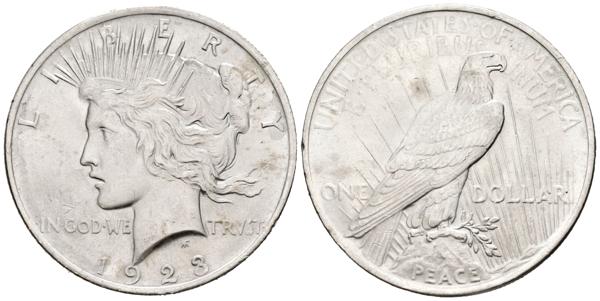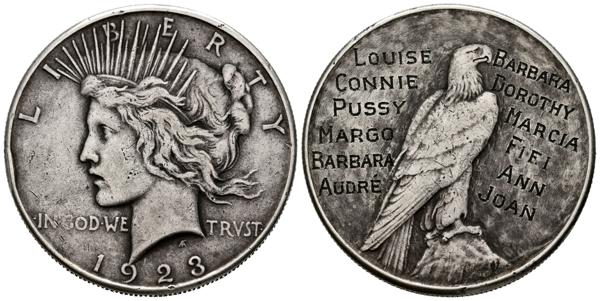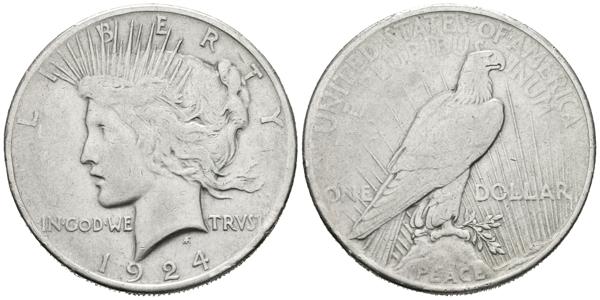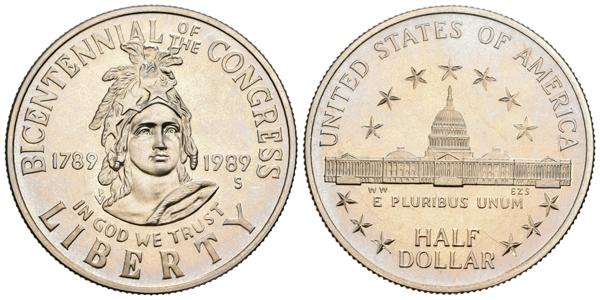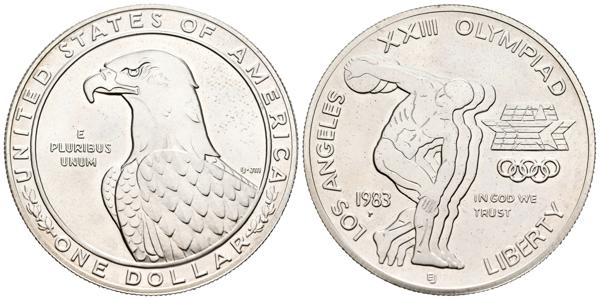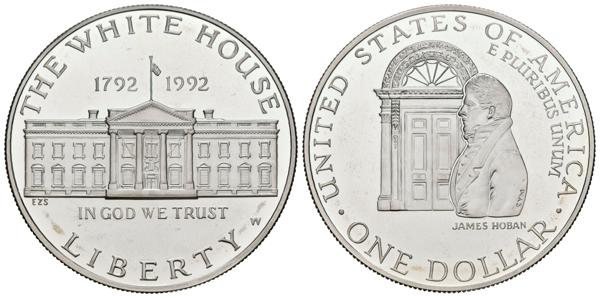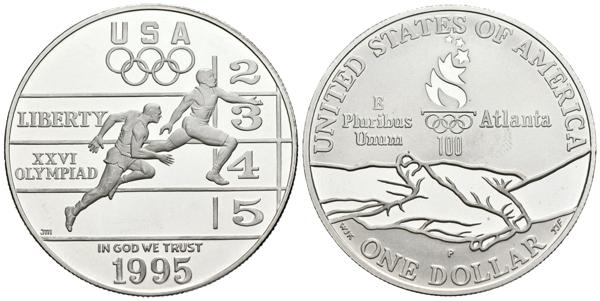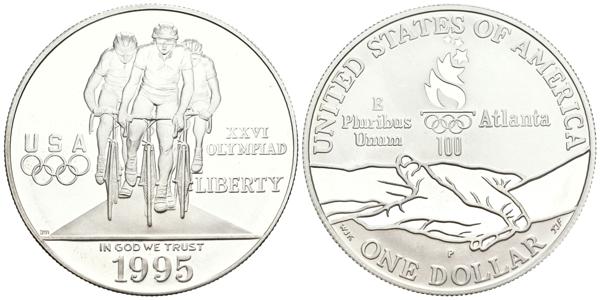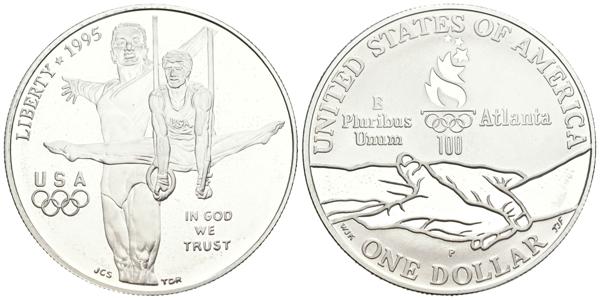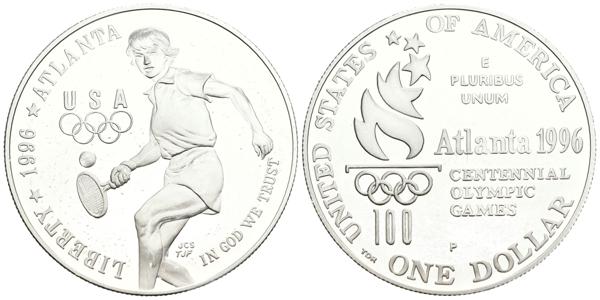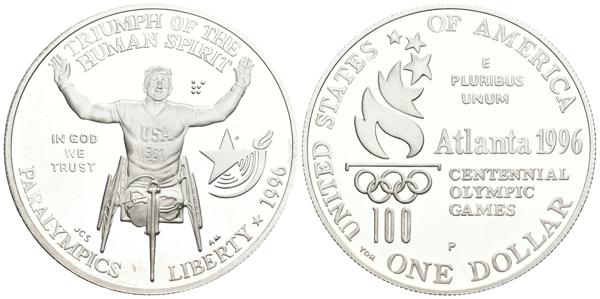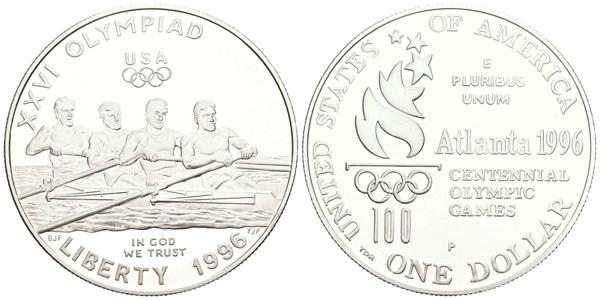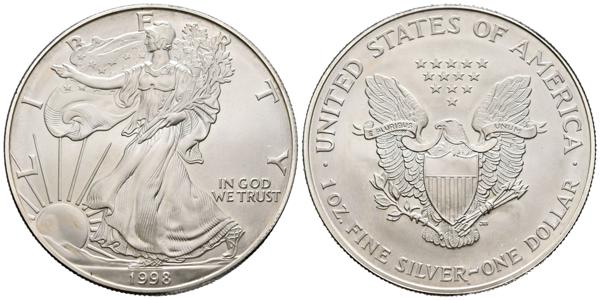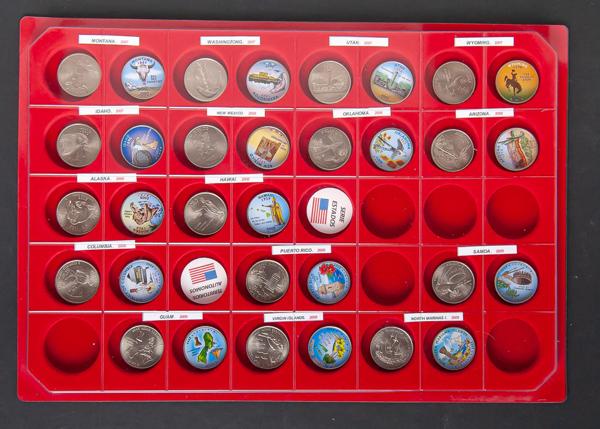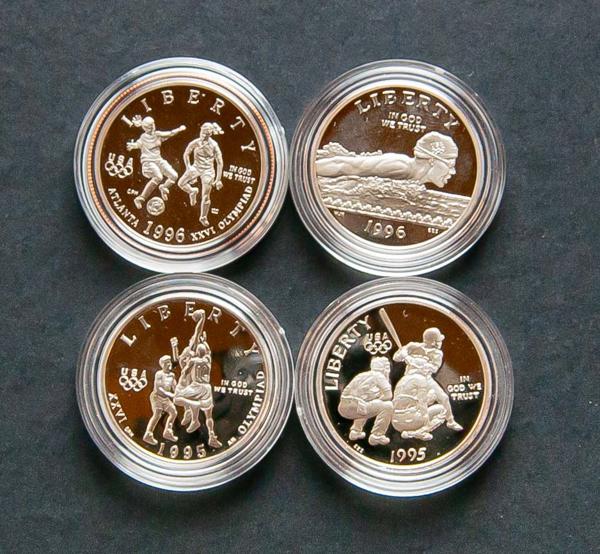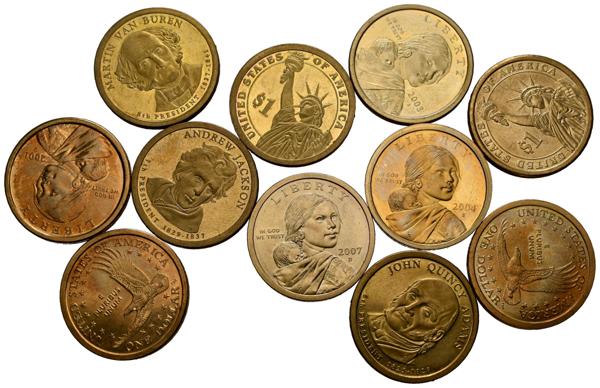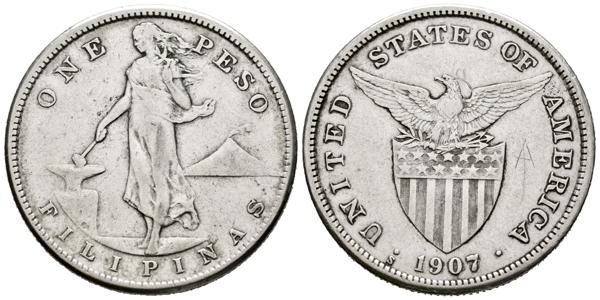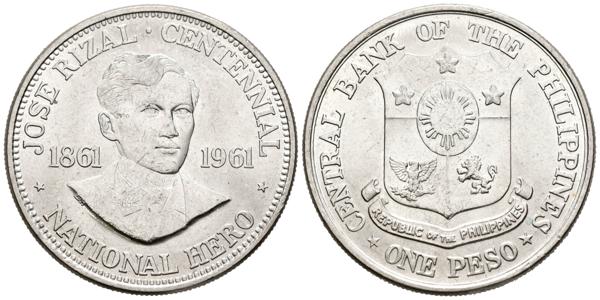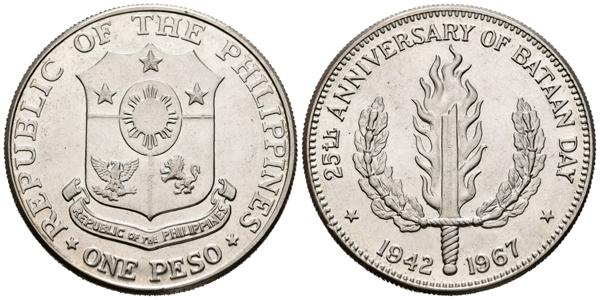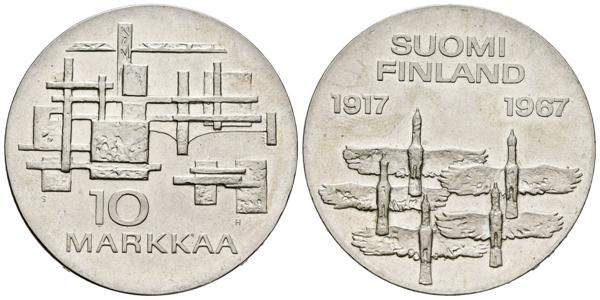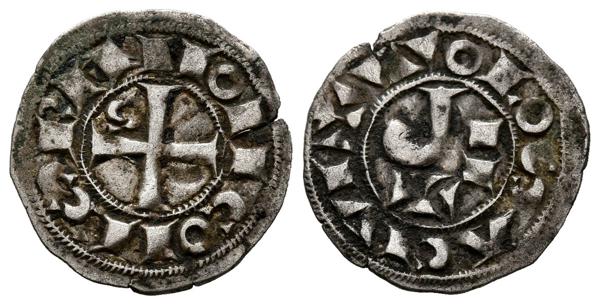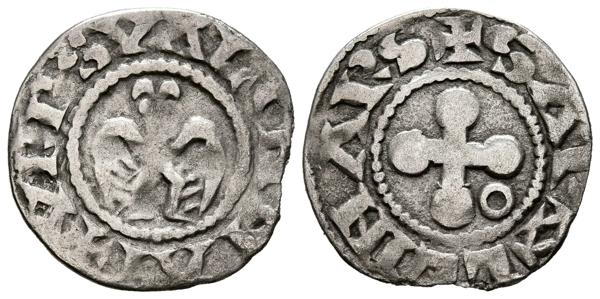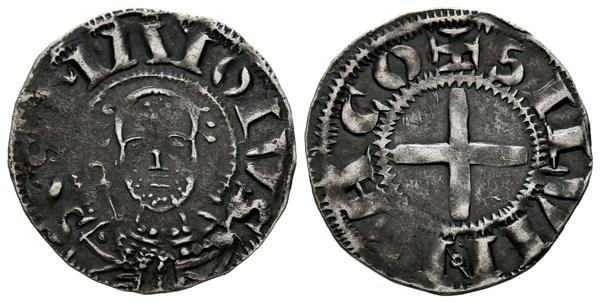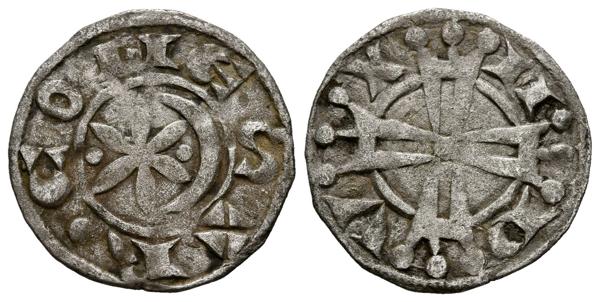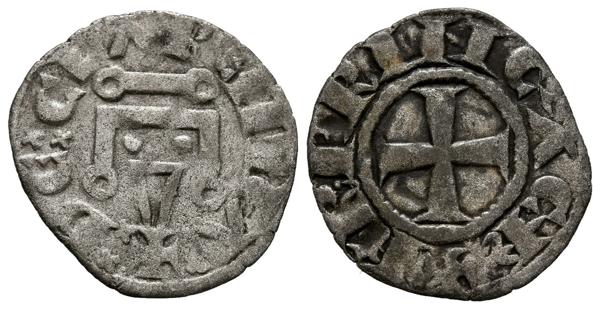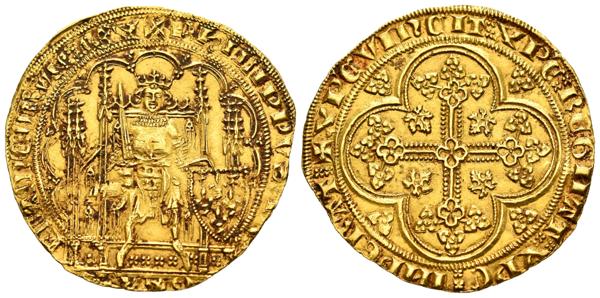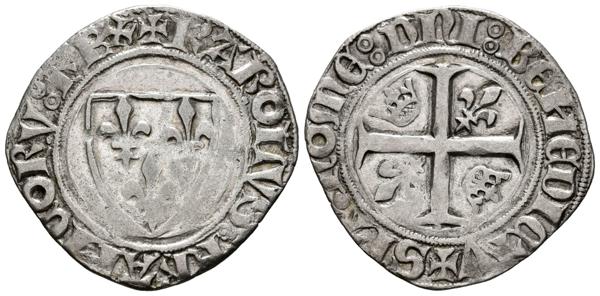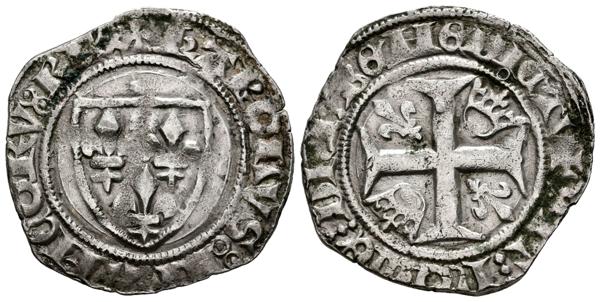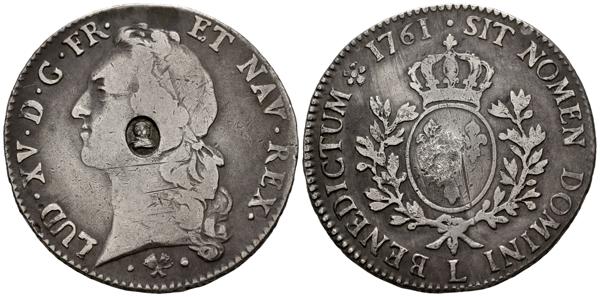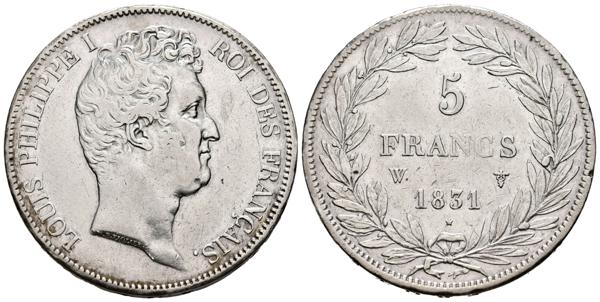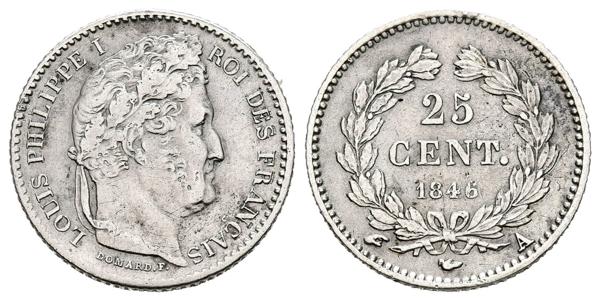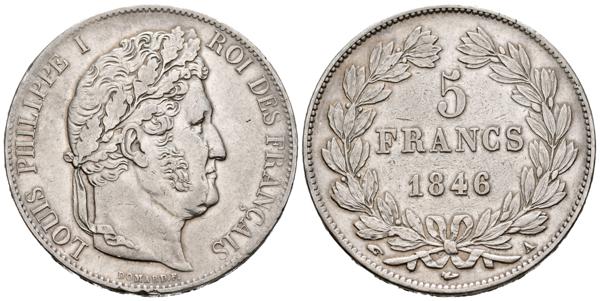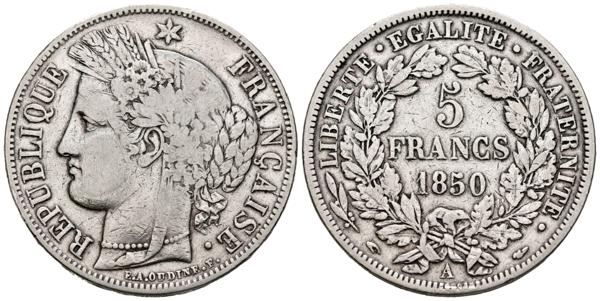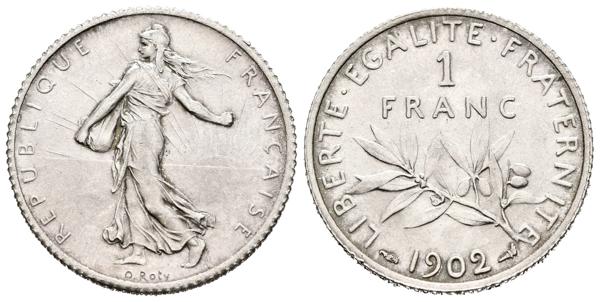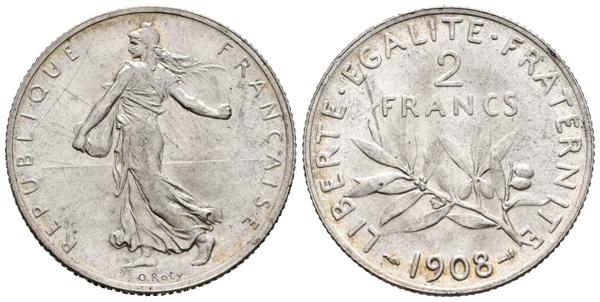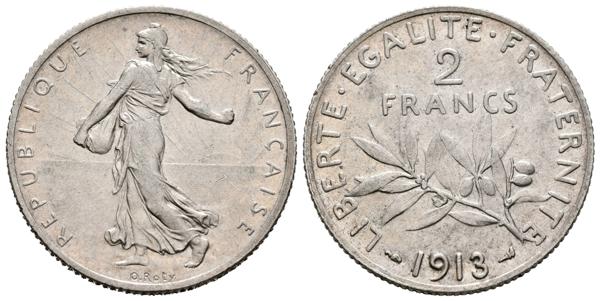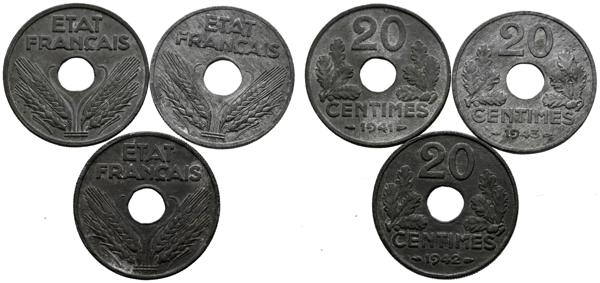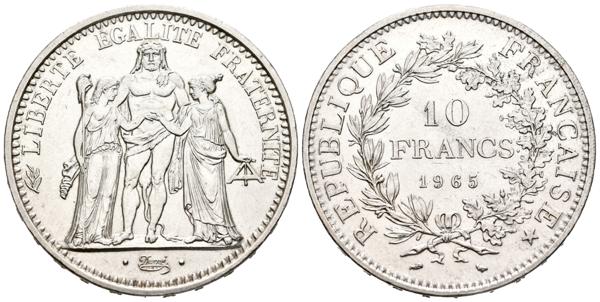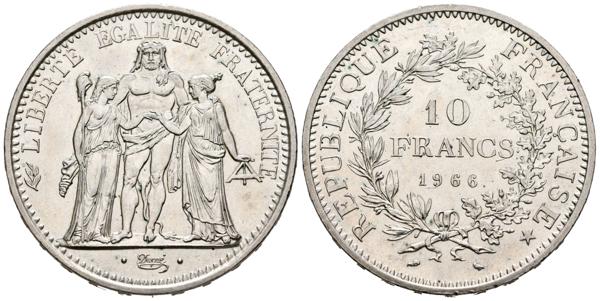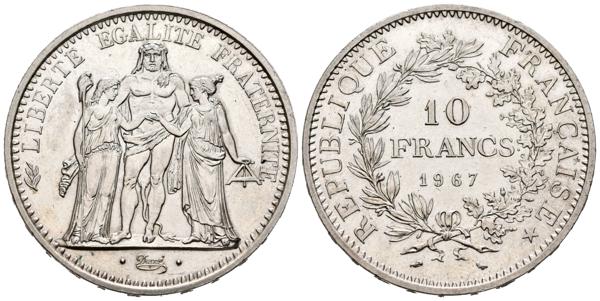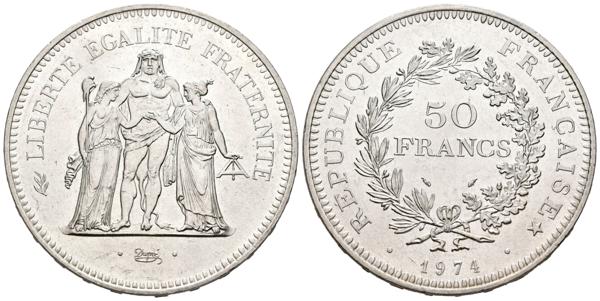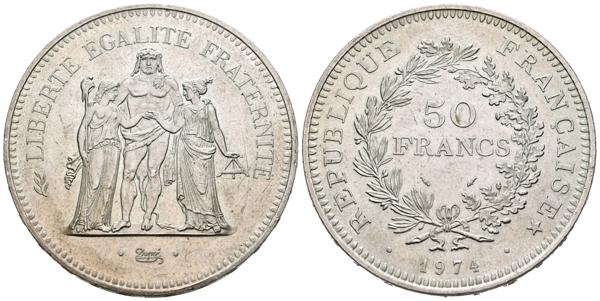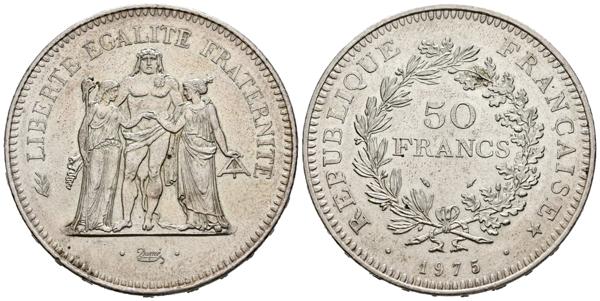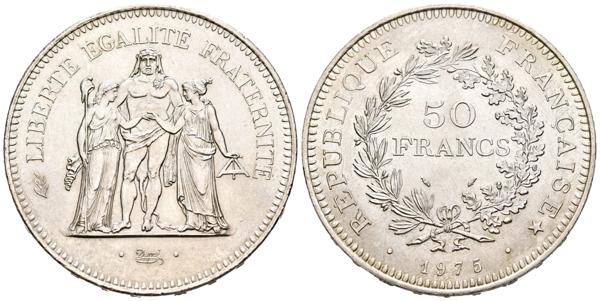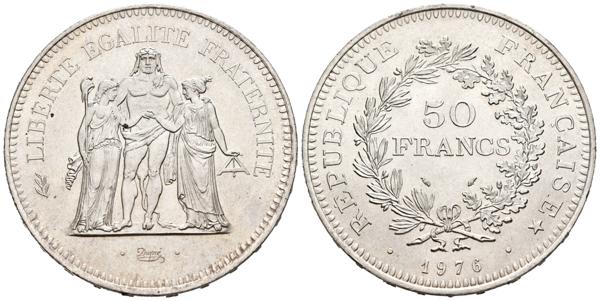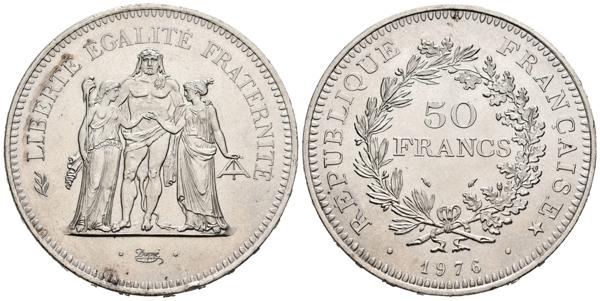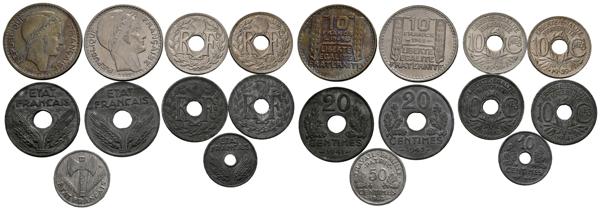Online Coins Auction #70
Thursday, 14 July 2022 | Madrid, 15:00 CEST
1551 | World coins
UNITED STATES. 1 dollar. (Ar. 26.77g/38mm). 1923. Philadelphia. (Km#150). Extremely Fine. Slight marks.
Automatically generated translation
1552 | World coins
UNITED STATES. 1 dollar. (Ar. 26.49g/38mm). 1923. (Km#150). Reverse engraved. Very Fine.
Automatically generated translation
1553 | World coins
UNITED STATES. 1 dollar. (Ar. 26.59g/38mm). 1924. Philadelphia. (Km#150). Good Very Fine.
Automatically generated translation
1554 | World coins
UNITED STATES. 1/2dollar. (Ae.Ni. 11.31g/31mm). 1989. San Francisco S. 200th Anniversary of Congress. (Km#224). PROOF. Includes capsule.
Automatically generated translation
1555 | World coins
UNITED STATES. 1 dollar. (Ar. 26.63g/38mm). 1983. Philadelphia P. Los Angeles Olympics 84. Discus Throw. (Km#209). Uncirculated.
Automatically generated translation
1556 | World coins
UNITED STATES. 1 dollar. (Ar. 26.62g/38mm). 1992. West Point W. 200th Anniversary of the White House. (Km#236). PROOF. Includes capsule.
Automatically generated translation
1557 | World coins
UNITED STATES. 1 dollar. (Ar. 26.71g/38mm). 1995. Philadelphia P. Atlanta 96 Olympic Games. Athletics. (Km#264). PROOF.
Automatically generated translation
1558 | World coins
UNITED STATES. 1 dollar. (Ar. 26.82g/38mm). 1995. Philadelphia P. X Olympic Games Atlanta 1996. Cycling. (Km#263). PROOF.
Automatically generated translation
1559 | World coins
UNITED STATES. 1 dollar. (Ar. 26.62g/38mm). 1995. Philadelphia P. Atlanta 96 Olympic Games. Gymnasts. (Km#260). PROOF.
Automatically generated translation
1560 | World coins
UNITED STATES. 1 dollar. (Ar. 26.68g/38mm). 1996. Philadelphia P. Atlanta 96 Olympic Games. Tennis. (Km#269). PROOF.
Automatically generated translation
1561 | World coins
UNITED STATES. 1 dollar. (Ar. 26.40g/38mm). 1996. Philadelphia P. X Paralympic Games. Atlanta 1996. (Km#268). PROOF.
Automatically generated translation
1562 | World coins
UNITED STATES. 1 dollar. (Ar. 26.53g/38mm). 1996. Philadelphia P. Olympic Games Atlanta 96. Rowing. (Km#272). PROOF.
Automatically generated translation
1563 | World coins
UNITED STATES. 1 dollar. (Ar. 31.34g/41mm). 1998. No mintmark. (Km#273). Uncirculated.
Automatically generated translation
1564 | World coins
UNITED STATES. Interesting set made up of 112 coins from the series of Quarter Dollars of the States and Autonomous Territories minted in 2007 in original and colored version. Almost complete series. Uncirculated.
Automatically generated translation
1565 | World coins
UNITED STATES. Set of 4 1/2 Dollar coins minted in 1995 and 1996 on the occasion of the 96 Atlanta Olympics. They include capsules and certificates of authenticity. PROOF.
Automatically generated translation
1566 | World coins
UNITED STATES. Magnificent set consisting of 11 1 dollar coins minted between 2000 and 2008. No repeated pieces, variety of mints, highlighting the 2003 and 2004 San Francisco dollar. Uncirculated. TO EXAMINE.
Automatically generated translation
1567 | World coins
UNITED STATES. Magnificent collection of approximately 1000 coins exhibited in 4 albums and with minting dates between 1913 and 2004. Large number of modules represented (Centavos, Dime, 1/4 Dollar, 1/2 Dollar and different types of 1 Dollar), mints as well as states of conservation, including a good number of pieces in Uncirculated. TO EXAMINE
Automatically generated translation
1568 | World coins
PHILIPPINES (North American Administration). 1 Weight. (Ar. 19.94g/35mm). 1907. San Francisco. (Km#172). Very Fine.
Automatically generated translation
1569 | World coins
PHILIPPINES. 1 Weight. (Ar. 26.76/38mm). 1961. Centenary of the Birth of José Rizal. (Km#192). Extremely Fine.
Automatically generated translation
1570 | World coins
PHILIPPINES. 1 Weight. (Ar. 26.52g/38mm). 1967. 25th Anniversary of Bataan Day. (Km#195). Good Extremely Fine.
Automatically generated translation
1571 | World coins
FINLAND. 10 Markkaa. (Ar. 23.90g/35mm). 1964. 50th Anniversary of Independence. (Km#50).
Automatically generated translation
1572 | World coins
FRANCE, Ramon V-VII (1148-1249). Mite. (Ar. 0.49g/14mm). County of Toulouse. (Boud 722). Obv: Cross, around legend: RAMON COMES. Rev: PAX, around legend: TOLOSA CIVI. Good Very Fine. Good copy.
Automatically generated translation
1573 | World coins
FRANCE, Bishopric of Valence and Die (Anonymous). Money. (Ar. 1.10g/18mm). 1157-1276. (Poey D'Avant 4690). Obv: Angel facing, around legend: URBS VALENTIAI. Rev: Cross, around legend: S.APOLLINARS. Good Very Fine. Nice specimen.
Automatically generated translation
1574 | World coins
FRANCE, Priory of Souvigny. Diner. (Ar. 1.00g/19mm). 1180-1213. (Poey D'Avant 2169). Obv: Bust facing, around legend: SES MAIOLUS. Rev: Cross, around legend: SILVINIACO. Good Very Fine. Scarce and more like that.
Automatically generated translation
1575 | World coins
FRANCE, Ramón VI (Marquisate of Provence). Money. (Ar. 0.77g/16mm). 1200-1220. Pont de Sorgues. (Poey d' Avant 3723; Boudeau 785, 2f). Obv: Sun and crescent inside gráfila, around legend: R COMES. Rev: Cross of Toulouse inside gráfila, around legend: DVX M. Very Fine.
Automatically generated translation
1576 | World coins
FRANCE, Philip of Taranto (Crusades). Money. (See 0.72g/17mm). 1306-1313. Achaia. (AG Malloy et al. CfC Sts no. 24 et seq.). Very Fine.
Automatically generated translation
1577 | World coins
FRANCE, Felipe VI. Gold Escudo . (Au. 4.53g/27mm). 1328-1350. (Duplessy 249). Obv: Felipe VI seated facing the throne with sword and shield inside a lobular groove, around legend: PHILIPPVS DEI GRA FRANCORVM REX. Cross decorated within a quadrilobe rráfila, around legend: XPC VINCIT XPC REGNAT XPC IMPERAT. Almost Extremely Fine/ Extremely Fine. Nice and rare specimen.
Escudo is understood as any coin, both from the Middle Ages and Modern, whose only requirement was to have a shield on one of its faces. In France it was the gold coin par excellence since the first copies were minted back in 1270 by King Louis IX. Throughout history they acquired different nicknames based on their iconography. This is the case of the famous shields of the chair, characteristic of the reign of Felipe VI and that show the enthroned sovereign from the front in a sequence that aims to convey greatness and strength. This type of coin dispenses with the recognizable portrait of the monarch in order to focus on the symbolic: crown, throne, scepter... and thereby fulfill one of the main functions of coinage in medieval times: to be a vehicle for transmitting the ruler's message to his followers. subjects. This iconography of the enthroned king soon became fashionable in much of Europe and thus, in the case of Castile, we will see its clear influence on the famous Enriques de la Silla, minted under the reign of Enrique IV already in the second half of the century. XV.
Automatically generated translation
1578 | World coins
FRANCE, Charles VI. Blanc Guenar. (Ar. 2.86g/26mm). 1380-1422. Paris A. (Dupplessy 377a). Very Fine.
Automatically generated translation
1579 | World coins
FRANCE, Charles VI. Blanc Guenar. (Ar. 2.86g/26mm). 1380-1422. (Dupplessy 377). Very Fine.
Automatically generated translation
1580 | World coins
FRANCE, Louis XV. Eq. (Ar. 29.11g/42mm). 1761. Bayonne L. (Gadoury 322) Very Fine. Countermark on obverse of bust of George III facing right within oval. Scarce seal.
Automatically generated translation
1581 | World coins
FRANCE. 5 Francs. (Ar. 24.50g/37mm). 1831. Louis Philippe I. Lille W. (Km#745). Very Fine.
Automatically generated translation
1582 | World coins
FRANCE. 25 cents. (Ar. 1.24g/15mm). 1846. Paris A. (Km#755.1). Almost Extremely Fine.
Automatically generated translation
1583 | World coins
FRANCE. 5 Francs. (Ar. 24.91g/37mm). 1846. Luis Felipe I. Paris A. (Km#745). Good Very Fine. Good copy.
Automatically generated translation
1584 | World coins
FRANCE. 5 Francs. (Ar. 24.60g/37mm). 1850. Second Republic. Paris A. (Km#761). Almost Very Fine/ Very Fine.
Automatically generated translation
1585 | World coins
FRANCE. 1 Franc (Ar. 5.02g/23mm). 1902. Paris. (Km#844). Almost Uncirculated. Slight scratch on reverse.
Automatically generated translation
1586 | World coins
FRANCE. 2 French (Ar. 10.00g/27mm). 1908. Paris. (Km#845). Almost Uncirculated.
Automatically generated translation
1587 | World coins
FRANCE. 2 French (Ar. 9.96g/27mm). 1913. Paris. (Km#845). Good Extremely Fine. Stripe on obverse.
Automatically generated translation
1588 | World coins
FRANCE. Pair of 10 Cents minted in 1938 and 1939 both in Uncirculated condition.
Automatically generated translation
1589 | World coins
FRANCE. Pair of 10 Cents minted in Zinc in 1941 with the variant without dots between the date and Centimes with and without underlining. Extremely Fine.
Automatically generated translation
1590 | World coins
FRANCE. Series composed of 3 zinc values of 20 cents from 1941, 1942 and 1943 of the French State or Vichy France. Different states of conservation. TO EXAMINE.
Automatically generated translation
1591 | World coins
FRANCE. 10 Francs. (Ar. 24.98g/37mm). 1965. (Km#932). Almost Extremely Fine. Slight marks.
Automatically generated translation
1592 | World coins
FRANCE. 10 Francs. (Ar. 24.97g/37mm). 1966. (Km#932). Almost Extremely Fine. Slight marks.
Automatically generated translation
1593 | World coins
FRANCE. 10 Francs. (Ar. 24.94g/37mm). 1967. (Km#932). Almost Extremely Fine. Slight marks.
Automatically generated translation
1594 | World coins
FRANCE. 50 Francs. (Ar. 29.97g/41mm). 1974. Hercules. (Km#941). Good Extremely Fine. slight marks
Automatically generated translation
1595 | World coins
FRANCE. 50 Francs. (Ar. 29.83g/41mm). 1974. (Km#941). Almost Extremely Fine. Little marks.
Automatically generated translation
1596 | World coins
FRANCE. 50 Francs. (Ar. 30.01g/41mm). 1975. (Km#941). Extremely Fine.
Automatically generated translation
1597 | World coins
FRANCE. 50 Francs. (Ar. 29.98g/41mm). 1975. (Km#941). Good Extremely Fine.
Automatically generated translation
1598 | World coins
FRANCE. 50 Francs. (Ar. 30.05g/41mm). 1976. (Km#941). Good Extremely Fine.
Automatically generated translation
1599 | World coins
FRANCE. 50 Francs. (Ar. 30.02g/41mm). 1976. (Km#941). Good Extremely Fine. Marks on the obverse.
Automatically generated translation
1600 | World coins
FRANCE. Set of 10 coins of different modules, values and materials minted between 1939 and 1949 including some variants. Pieces from both the French Republic and the French State. High level of general conservation. TO EXAMINE.
Automatically generated translation

